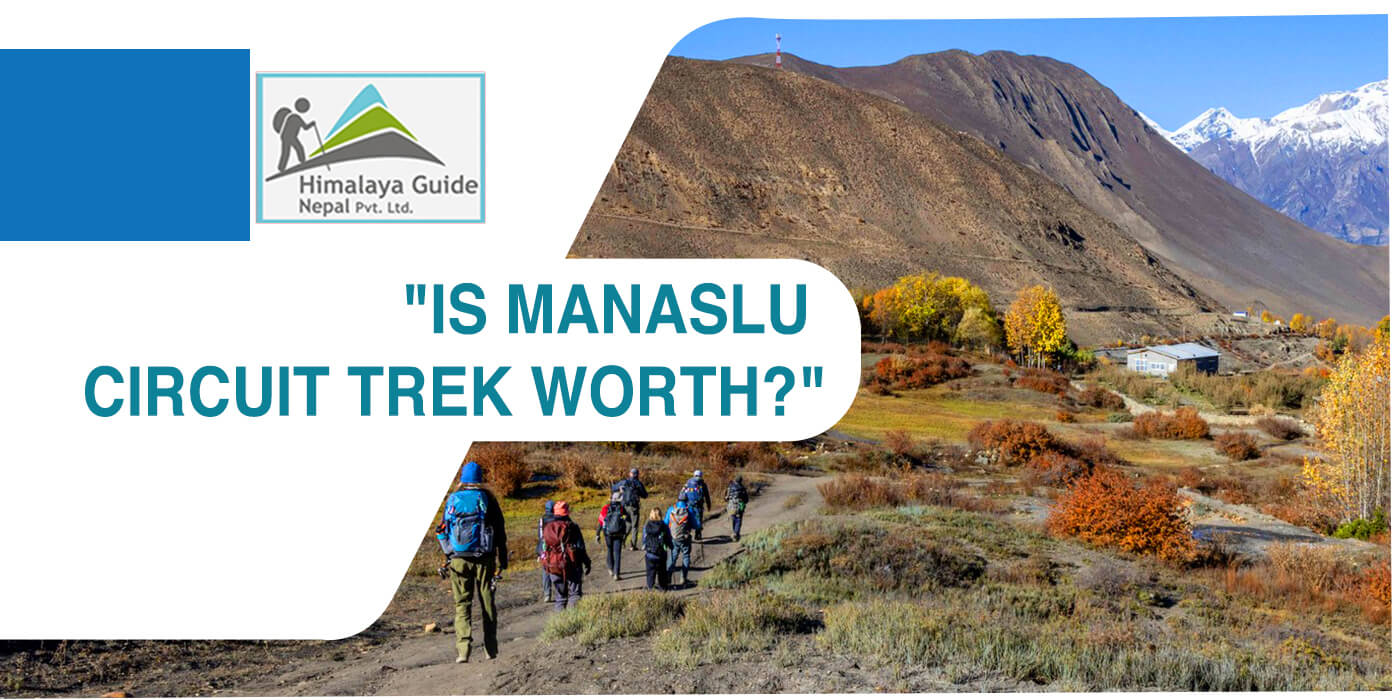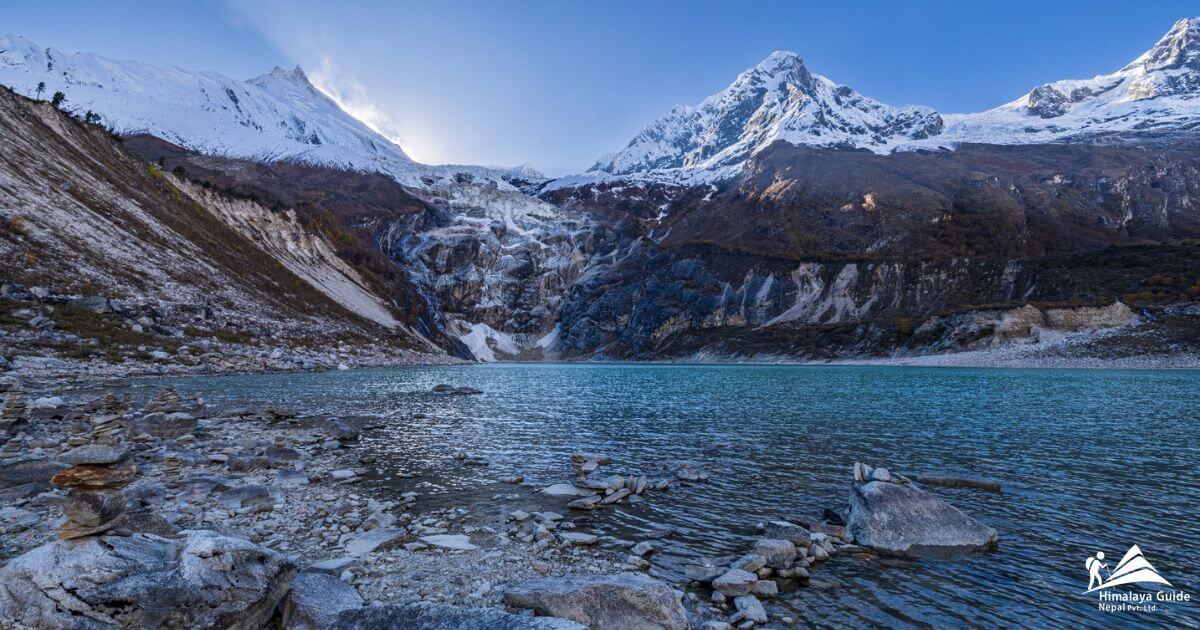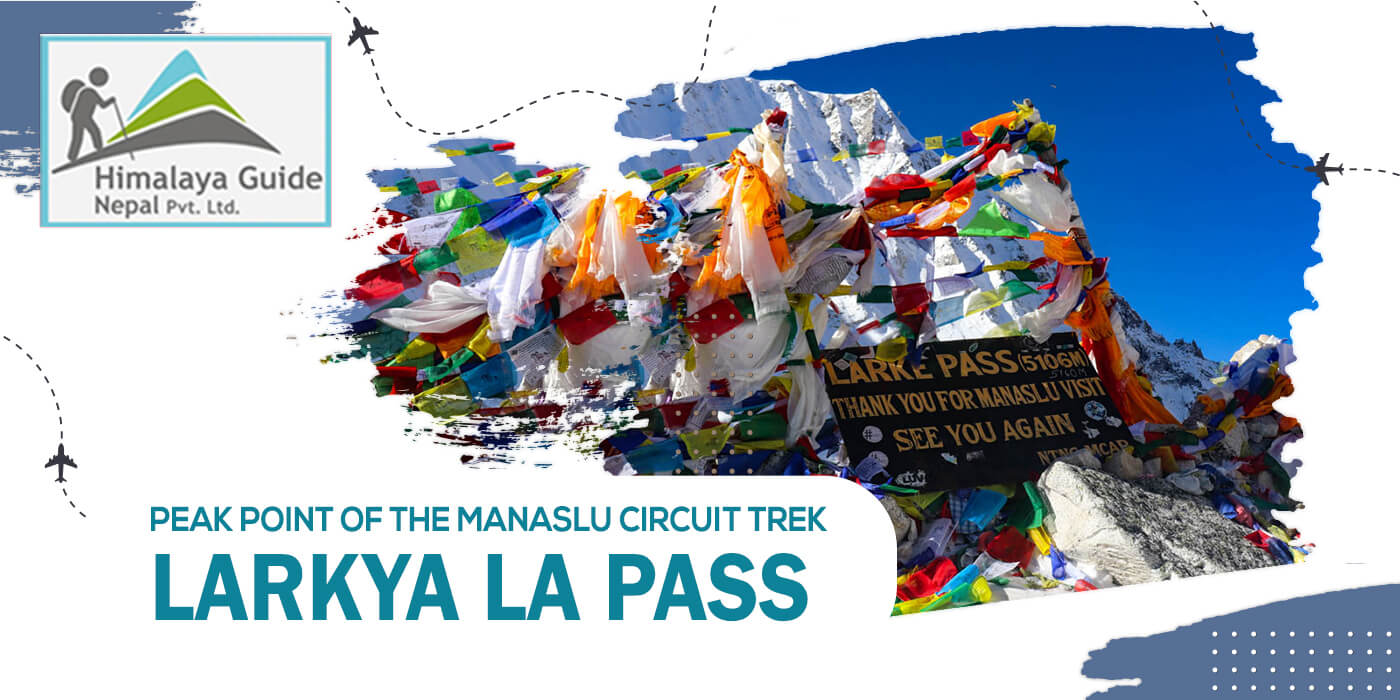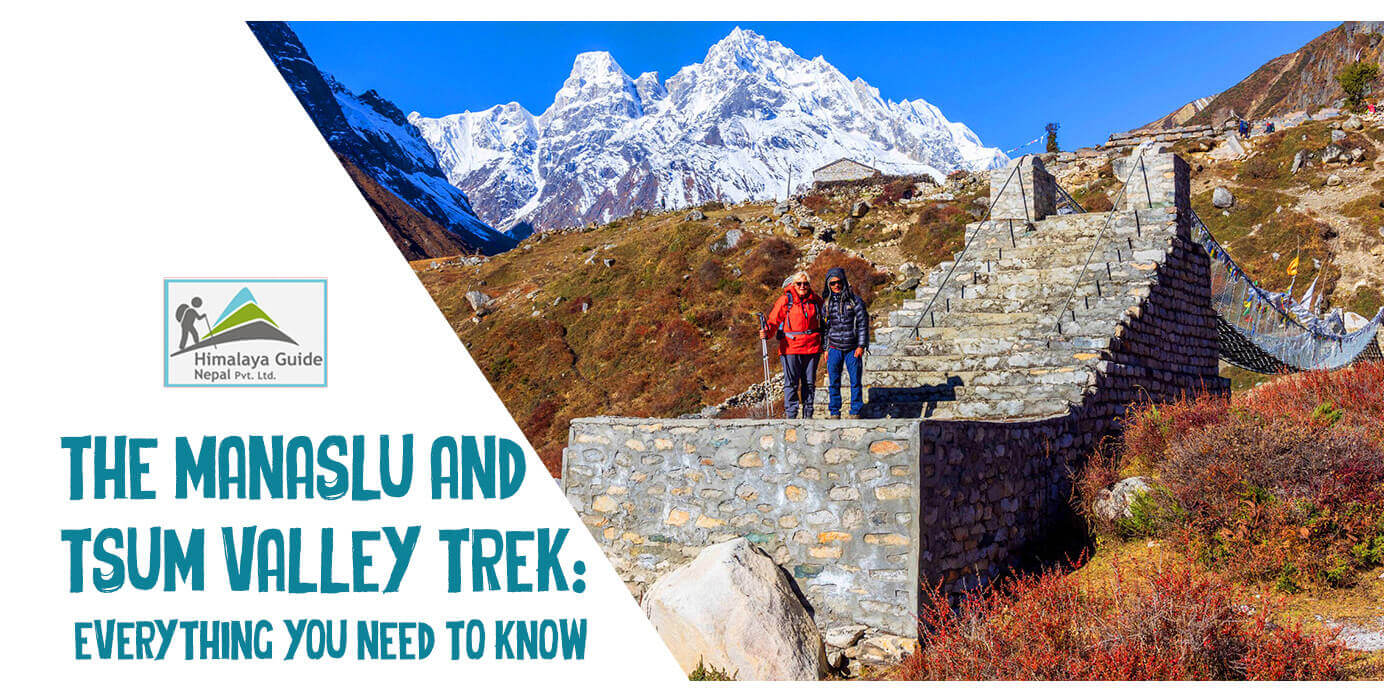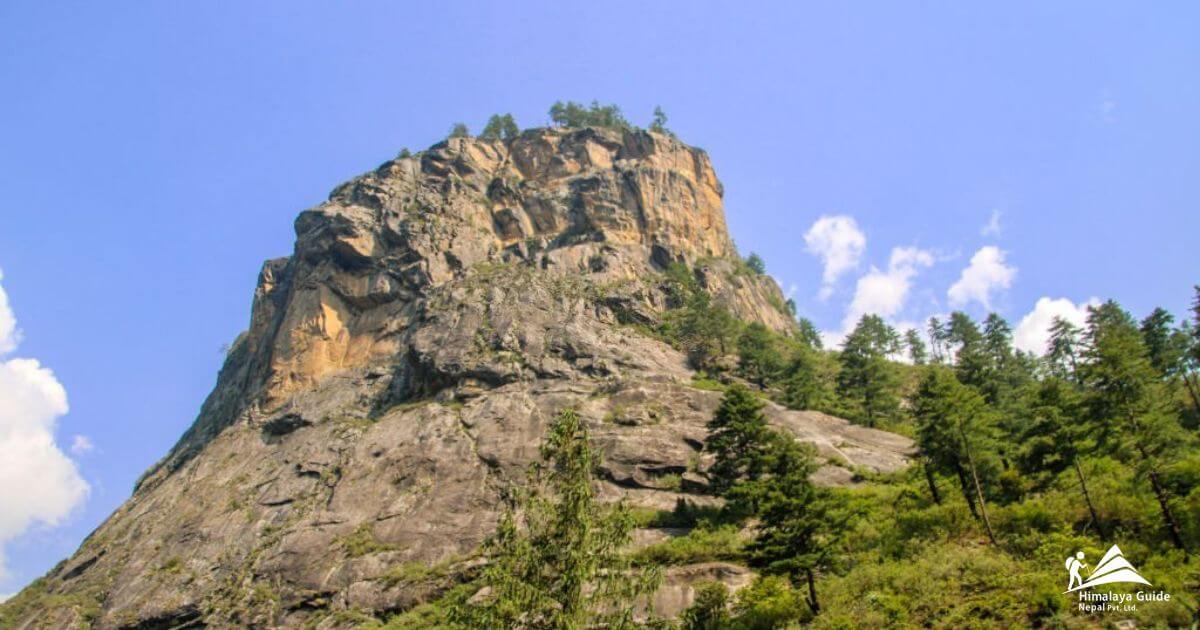The Manaslu Circuit hike circles one of the world’s most beautiful mountains, Mount Manaslu. Mount Manaslu is the eighth-tallest peak in the world, also known as “Kutang”. We may witness mountains like Himalchuli, Ngadi Chuli Manaslu, Annapurna, Shringi, Ganesh Himal, and many more throughout the Manaslu Circuit Trek. As a result, the Manaslu Circuit trek is popular.
The Manaslu Circuit Trek offers exceptional cultural experiences in addition to the natural splendour as you journey through rural villages populated by the Gurung and Tibetan tribes. The locals have retained a rich cultural history and distinctive way of life for many years.
Because of its exceptional natural beauty and unique cultural encounters, the Manaslu Circle Trek is considered one of Nepal’s top treks. You can avoid the crowds and enjoy a more genuine Nepal because the journey takes you through isolated and off-the-beaten-path regions.
Ultimately, the Manaslu Circuit Trek is a well-rounded experience combining breathtaking natural beauty, distinctive cultural encounters, and difficult climbing terrain, making it a favourite among trekkers.
Overview
For several reasons, the Manaslu circuit trip is well-liked. First of all, the walk is challenging and daring and gives breathtaking vistas of the Himalayan mountains and a variety of landscapes. The walk offers a singular cultural and ecological experience, taking you past isolated communities, verdant woods, and a high mountain pass.
Second, compared to other well-known trekking locations in Nepal, the path is less congested, making it an excellent option for those seeking a more quiet trekking experience. Finally, the walk appeals to mountaineers and adventure enthusiasts since the area is home to the magnificent Mount Manaslu, the eighth-highest summit in the world.
Lastly, the region gives a taste of traditional Nepalese lifestyle and culture and is rich in cultural legacy, making it a fantastic location for cultural discovery.

Reason Why Is Manaslu Circuit Trek Being Popular?
The trek is best known for its unique natural beauty, varied culture, and beautiful mountain panoramas. Here is some reason why the Manaslu circuit trek is popular.
Gem for Adventure Lover:
The Manaslu Trail Trek provides an exceptional and challenging experience that requires sufficient physical fitness and trekking expertise. So those who love adventure activities and outdoor camping can join this trek.
Trekkers must be ready for a day of heavy trekking due to the high hill climbs and downhills on the trail. The high altitude also increases the chance of altitude sickness, which, if not correctly handled, can lead to loss of life.
Easy to Explore but Less Crowd:
The Manaslu Circuit Trek is a less-travelled trekking route in Nepal, making it simpler for trekkers to explore and take in the scenery and cultural experiences they encounter. The Manaslu Circuit Trek provides a less crowded and more peaceful trekking experience than other, more well-known treks like the Annapurna and Everest Base Camp.
It enables hikers to experience the local culture and environment more directly and intimately. An excellent option for hikers searching for a unique and less crowded trekking journey in Nepal, the trek also provides stunning mountain vistas and a variety of natural and cultural attractions.
Inexpensive Accommodation:
Several teahouses and lodges are available for trekkers to stay in along the Manaslu Circle Trail. Typically, these teahouses and lodges provide simple lodging with tidy, pleasant rooms, shared toilets, and dining areas. Compared to these, teahouses are cheap and try to provide as much as they can in such a dangerous place.
They may be few and crowded during peak times but less crowded otherwise. These teahouses and lodges typically provide reasonable choices for trekkers on a budget, while the cost of lodging might vary based on the season and location. Generally speaking, staying in teahouses and lodges is a fantastic opportunity to get a taste of the local hospitality and culture of the people who live in the Manaslu region.

No Need for Hardcore Experience:
The Manaslu Circuit Trek typically takes 14 to 18 days to accomplish, depending on the route and stamina of the trekker. Despite being a challenging journey, a hardcore trekking experience is unnecessary for the Manaslu Circuit Trek. Anybody may complete this trip with reasonable fitness with the proper physical preparation and training.
Also, there are chances to acclimate and adjust to the altitude while climbing. As a result, it is a good option for everyone who wants to go trekking in Nepal but has a restricted amount of time or experience. It’s an excellent choice for anyone who wishes to trek in Nepal but only has a little time or experience.
Exploration and Observation of the Unspoiled Tradition:
The Manaslu Circuit Trek offers chances to learn about and experience various cultures. During the route of the walk, there are various ancient caves to visit and the chance to learn about Buddhist culture. the trip also passes through several isolated Nepalese villages that lie between the border of Nepal and Tibet,
Provide an opportunity to look into the past, and a genuine cultural experience may be had by strolling through these remote and separated ethnic communities beneath the Manaslu peaks. As the path travels through several traditional villages and historical sites, the trip is a fantastic opportunity to learn about the rural and authentic Nepalese way of life.
Economic and Easy:
Manaslu Circuit Trek is more economical when compared to other well-known trekking locations in Nepal, such as Everest Base Camp and Annapurna Base Camp. This is due mainly to the journey needing to be more developed and congested, which results in cheaper lodging and food prices.
Trekkers in the Manaslu Circuit Trek stay in typical teahouses, which provide simple facilities like a bed, a blanket, and a shared restroom. While there are few food alternatives, they offer the best sustenance to keep hikers going. Yet, because it is more challenging to carry supplies to higher heights, food prices rise as hikers gain altitude.
Overall, the Manaslu Circuit Trek provides excellent value for the money, enabling hikers to take part in a demanding and rewarding journey while keeping their expenses manageable. It is a beautiful chance for cultural discovery since it preserves the heritage and gives a glimpse of the traditional Nepalese lifestyle and culture.
Needs of a Permit for Safe trek:
Trekkers must get an Annapurna Conservation Area Permit (ACAP) and a Manaslu Restricted Area Permit (RAP) to hike in the Manaslu Conservation Area. While planning a trip in the Manaslu region, verifying the most recent information is crucial because the permit fees vary based on the season and are subject to change.
So this type of permit ensures the safety of the tracker. It’s also important to remember that a party of at least two persons and a certified guide must hike in the Manaslu region. The trekking agencies’ association of Nepal can provide the guide with a Trekker’s Information Management System (TIMS) card, which is required. So in case of any mishap, trekkers can quickly get rescued.
Highlight: Larkya la pass:
The Larkya La Pass, which is 5,160 metres high, is one of the factors that contributed to the popularity of the Manaslu circle trip. The pass, one of the most challenging parts of the route, offers breathtaking vistas of the surrounding peaks and valleys.
The highlight of the Manaslu Circle Hike is Larkya La Pass. Although it’s a tricky part of the climb, the breathtaking vistas at the summit make it all worthwhile. The trek up to the pass, which is at 5,160 metres, includes exhausting steps across rocky terrain with the possibility of encountering snow and ice. Trekkers also enjoy breathtaking views of mountains and valleys and a sense of accomplishment.
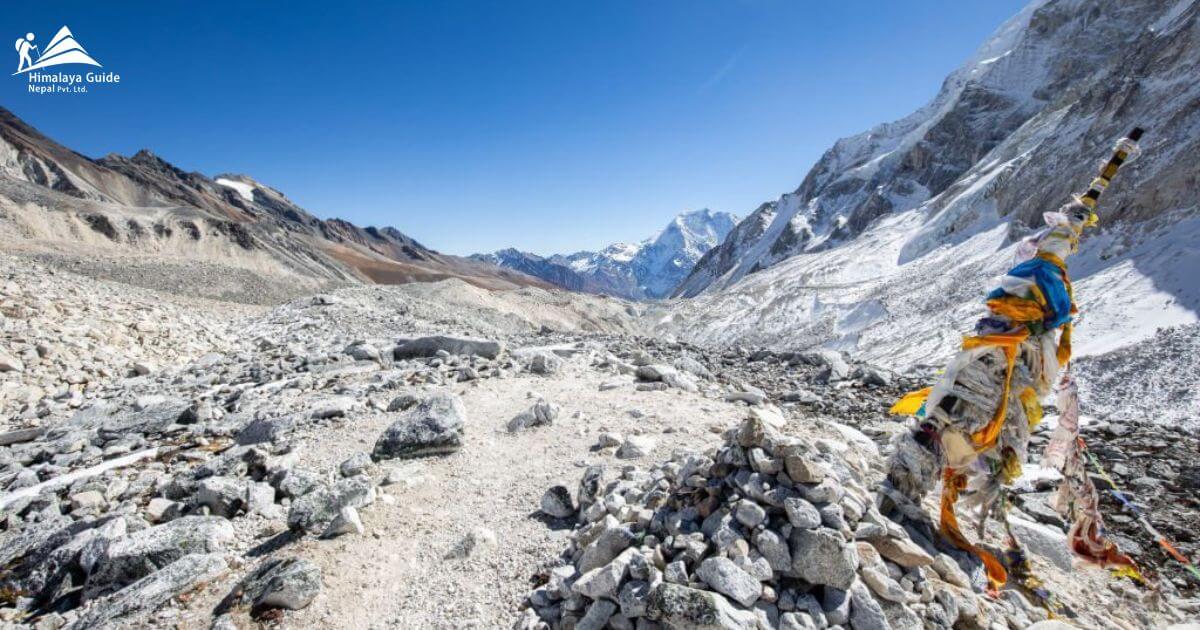
View of the Several Highest Mountains :
The Manaslu Circle Trek provides breathtaking views of Mount Manaslu and other snow-capped summits over 6500 metres. Along with a wide variety of viewpoints, the hike also offers views of Annapurna II, Ganesh Himal, Himlung, Kang Guru, Cheo Himal, and many more mountains. The journey is made unique by the changing sights of these spectacular mountains as you travel from one location to another.
Stunning Views of Rivers and Mountains:
The Manaslu Circuit Trek also provides magnificent sights of the mountains and rivers in the Buri Gandaki Valley, which enhances the trek’s overall natural beauty. The Pungyen Monastery, sitting on a hill and providing beautiful views of the area’s mountains and valleys, is another highlight of the journey.
After a strenuous day of climbing, the walk also brings you to Birendra Tal or Lake, a great location to chill and recover. With its natural beauty and cultural contacts, the Manaslu Circuit Trek offers a singular and remarkable trekking experience.

Conclusion:
If you’re searching for a challenging and less crowded Nepal trip, the Manaslu Circuit Trek is a fantastic choice. Yet, preparing physically for the trek’s challenging terrain and high altitude is critical.
Likewise, the Manaslu Circuit Trek is an extraordinary journey for seasoned hikers seeking a remarkable and challenging trekking experience in Nepal. So to guarantee a risk-free and pleasurable journey, it is essential to be well-prepared and to follow all appropriate safety measures.
It’s critical to properly acclimate and follow a moderate climb to prevent altitude-related health issues. The lack of amenities and supplies along the path makes self-sufficiency a must when trekking in a remote and isolated area like Manaslu. Trekkers should be well-prepared with the appropriate gear, clothes, and equipment and have some previous trekking experience.







